Orchids are renowned for their exquisite beauty and grace, making them a popular choice among flower enthusiasts. While they may seem delicate and challenging to care for, with the right knowledge and techniques, even beginners can successfully nurture and enjoy these stunning plants. In this blog post, we will provide you with a comprehensive guide to orchid care, covering essential aspects such as watering, light requirements, temperature, and common mistakes to avoid.

Understanding the different types of orchids can help you appreciate their diverse beauty and characteristics. Each orchid species has its own specific care requirements, including light levels, temperature ranges, humidity preferences, and watering needs. Therefore, it is essential to research and identify the specific type of orchid you have to provide the best care possible and ensure its well-being. Here are a few more commonly encountered orchid types:
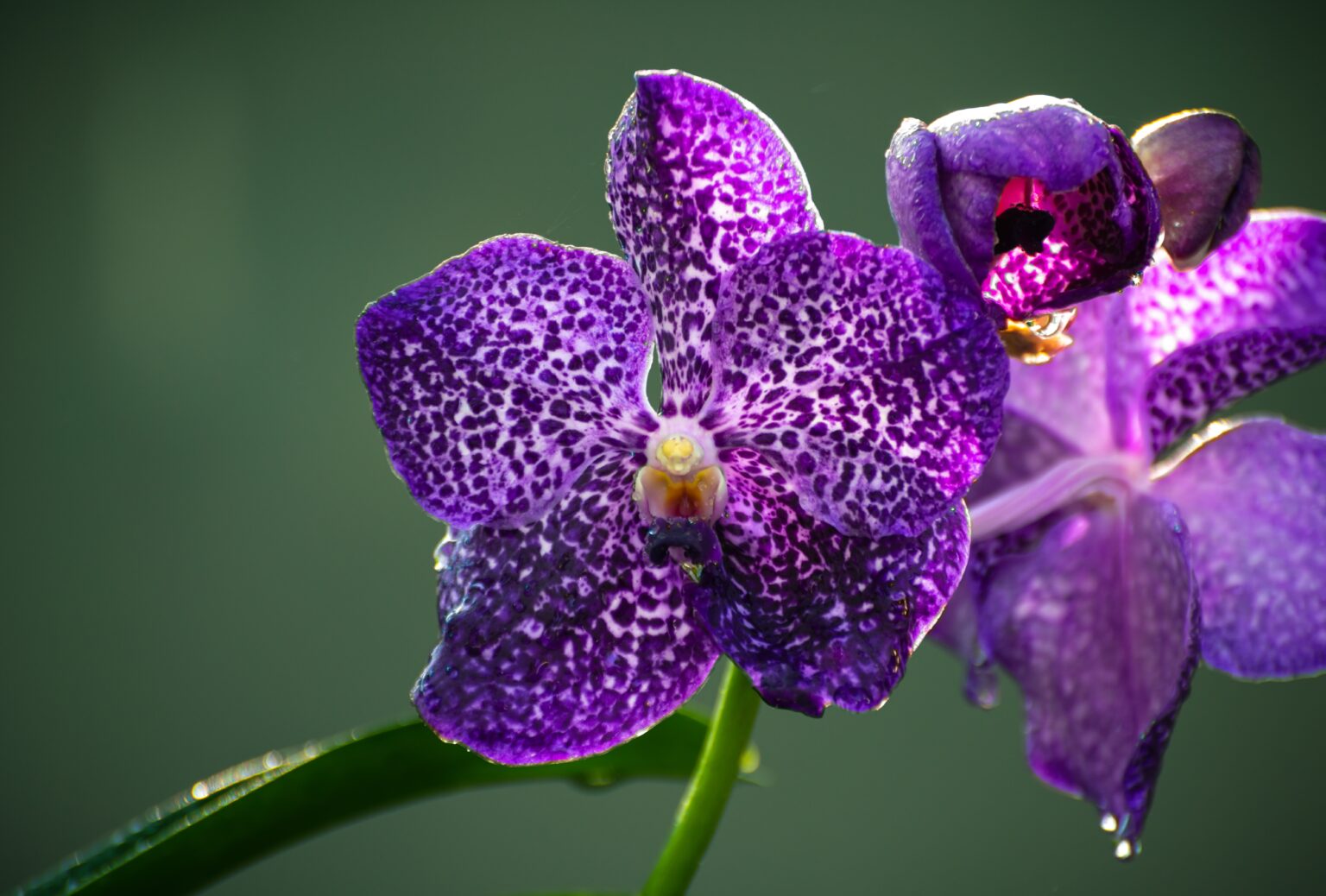
Vanda Orchids: Vanda orchids are known for their vibrant and large flowers. They often have striking colors and patterns, and their blooms can last for several weeks. Vanda orchids are epiphytic, meaning they naturally grow on trees, so they require ample air circulation and bright, indirect light.
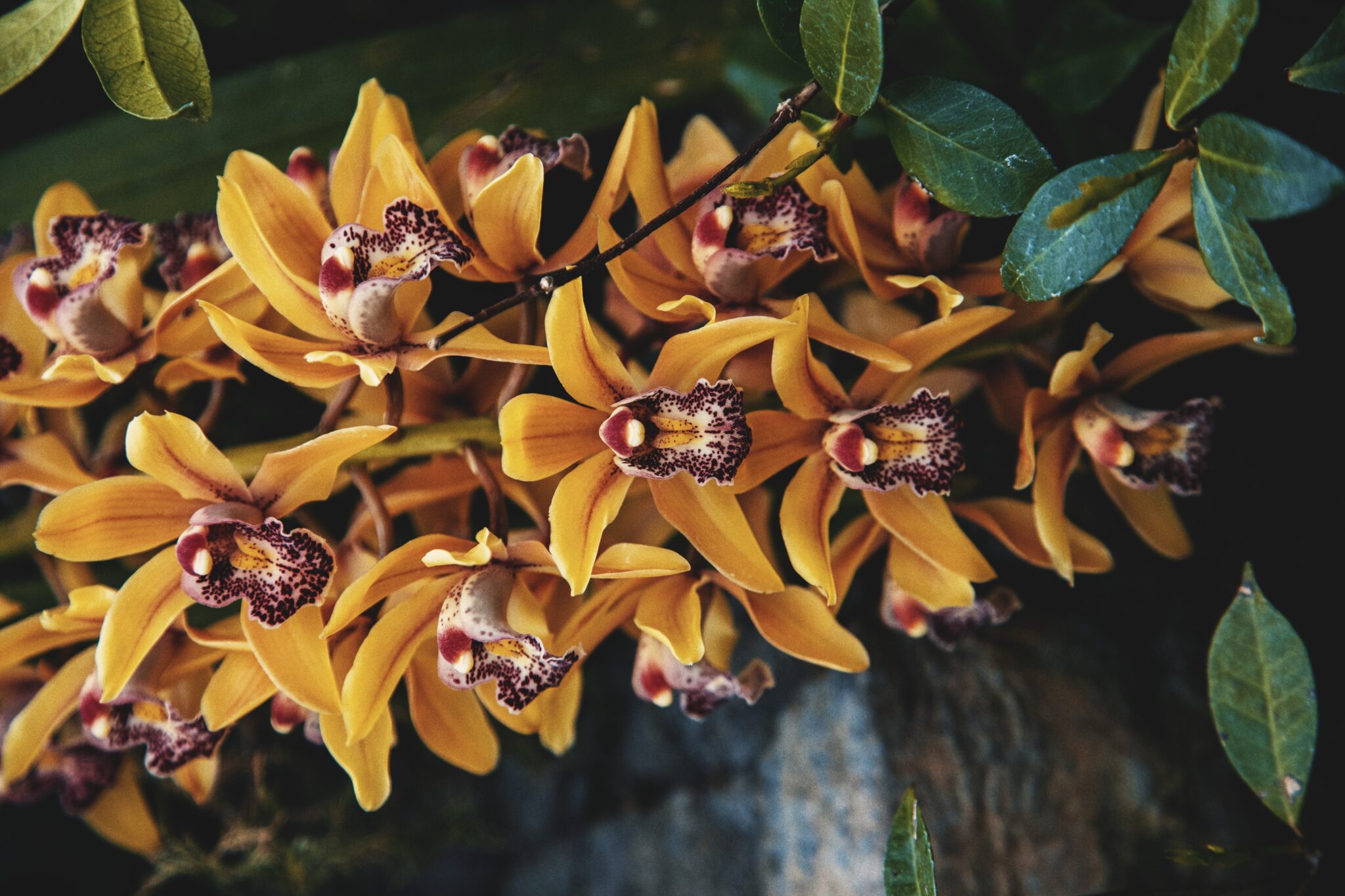
Cymbidium Orchids: Cymbidium orchids are popular for their long-lasting flowers, which come in a wide range of colors. These orchids prefer cooler temperatures compared to other types, making them suitable for temperate climates. They require moderate light and regular watering.

Lady Slipper Orchids (Paphiopedilum): Lady Slipper orchids are known for their unique pouch-shaped blooms, resembling a slipper. They come in various colors and patterns. Lady Slipper orchids generally prefer moderate light and a well-draining potting mix. They can be a bit more challenging to grow than some other types, but they reward dedicated orchid enthusiasts with stunning blooms.

Brassia Orchids (Spider Orchids): Brassia Orchids, commonly referred to as Spider Orchids, have elongated petals resembling spider legs. They often have intricate patterns and colors that make them quite captivating. These orchids prefer bright, indirect light and moderate humidity.
Oncidium Orchids (Dancing Lady Orchids): Oncidium orchids, also known as Dancing Lady Orchids, produce clusters of small flowers that resemble dancing figures. They come in a variety of colors and often have a sweet fragrance. Oncidium orchids prefer bright, indirect light and regular watering.
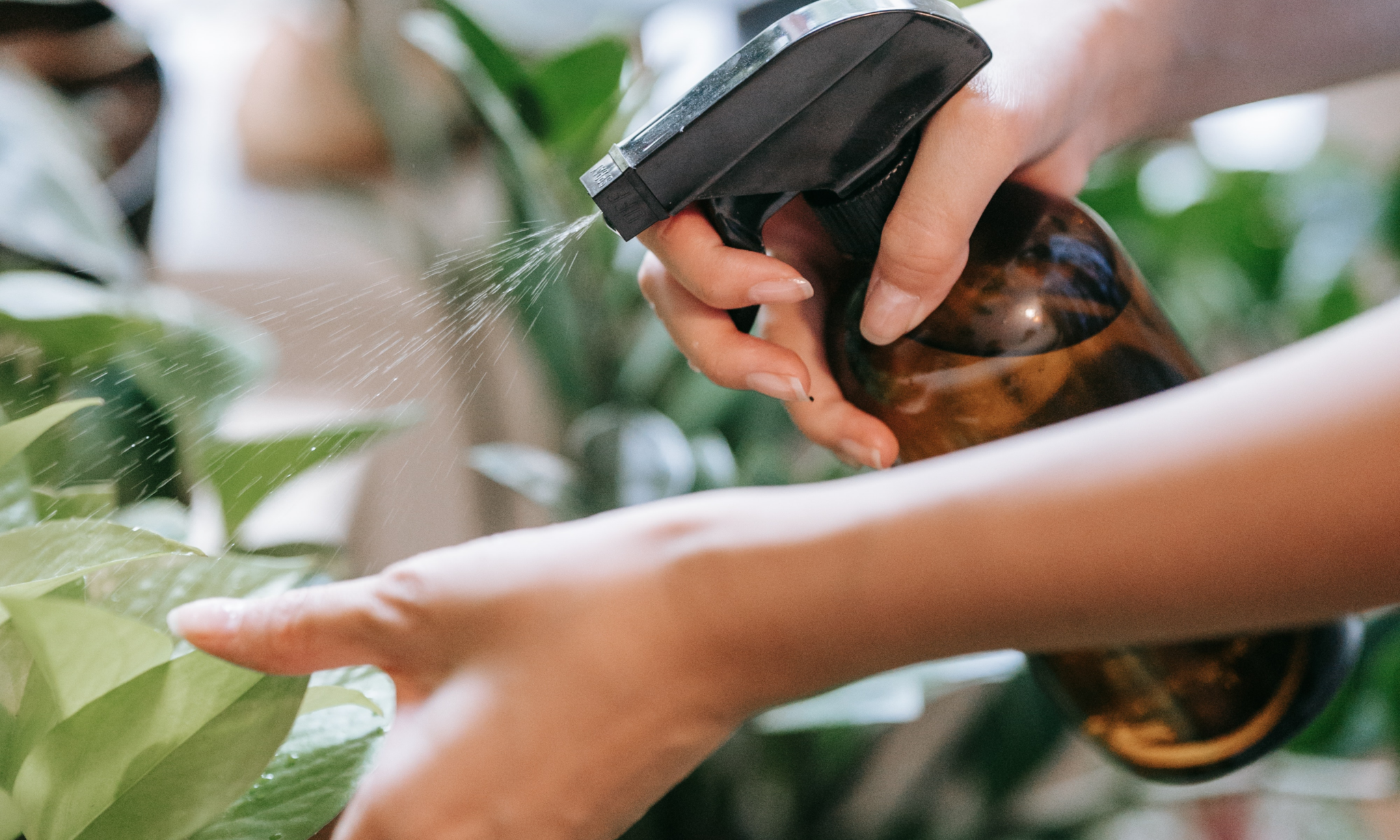
Watering orchids can be tricky, as they require a delicate balance. Most orchids prefer a semi-dry environment, so it’s important not to overwater them. The general rule is to water them thoroughly, allowing excess water to drain away. Wait until the growing medium is almost dry before watering again. Using an ice cube to water orchids is a popular and convenient method to ensure proper watering. It helps to provide a controlled amount of water without overwatering. Simply place one or two ice cubes on the orchid’s growing medium, allowing them to melt slowly and provide moisture to the roots. This method is especially suitable for phalaenopsis orchids, as they prefer a slightly drier environment.

Orchids need ample light to thrive, but direct sunlight can scorch their delicate leaves. Place your orchids near a window with filtered light or use sheer curtains to protect them from harsh rays. Phalaenopsis orchids, for instance, can tolerate lower light conditions compared to other varieties. If your orchid’s leaves turn yellow or pale, it may indicate that it’s receiving insufficient light.
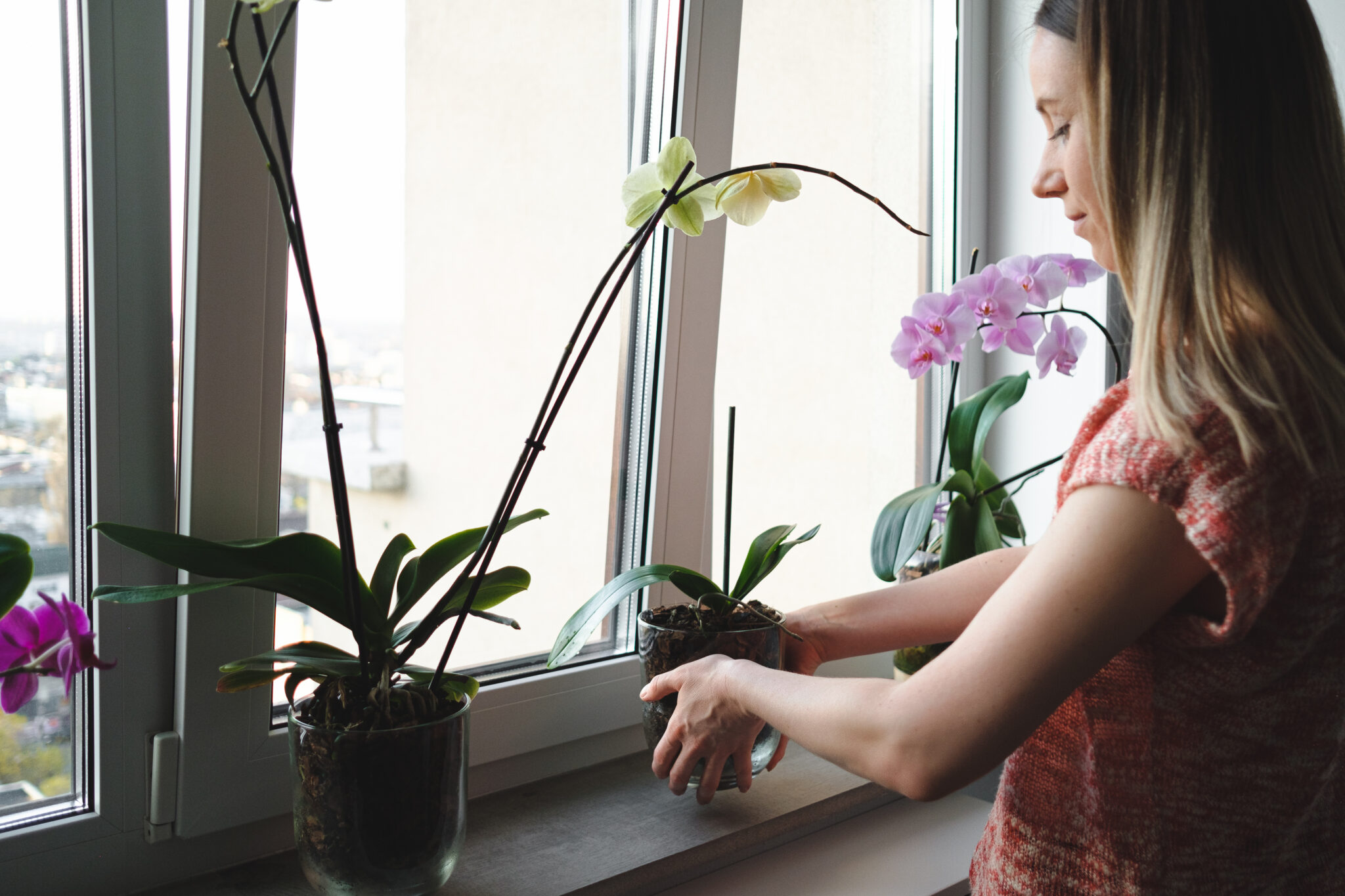
Most orchids prefer moderate temperatures and thrive in environments similar to their native habitats. Daytime temperatures between 65°F and 80°F (18°C-27°C) and nighttime temperatures around 10°F (5°C) cooler are generally suitable. Orchids also appreciate humidity levels between 40% and 60%. To increase humidity, consider using a humidifier, placing the orchid on a humidity tray, or grouping them together.
Orchids are typically potted in a loose, well-draining medium like orchid bark, sphagnum moss, or a mix of both. It’s essential to repot orchids every one to two years to refresh the growing medium and prevent overcrowding. Look for signs such as excessive roots or a dense, compact root ball. Gently remove the orchid from its pot, trim any dead or rotting roots, and repot it into a slightly larger container with a fresh growing medium.

Orchids require regular fertilization to provide them with essential nutrients. Use a balanced orchid fertilizer diluted to half or quarter strength and apply it every two to four weeks during the growing season. Avoid fertilizing when the orchid is not actively growing, as it can lead to salt build-up and damage to the roots. Always follow the manufacturer’s instructions and err on the side of caution to prevent over-fertilizing.
In order to successfully care for your orchids, it’s important to avoid common pitfalls such as overwatering, insufficient light, using improper potting medium, and neglecting air circulation, as these factors can significantly impact the health and vitality of your plants.
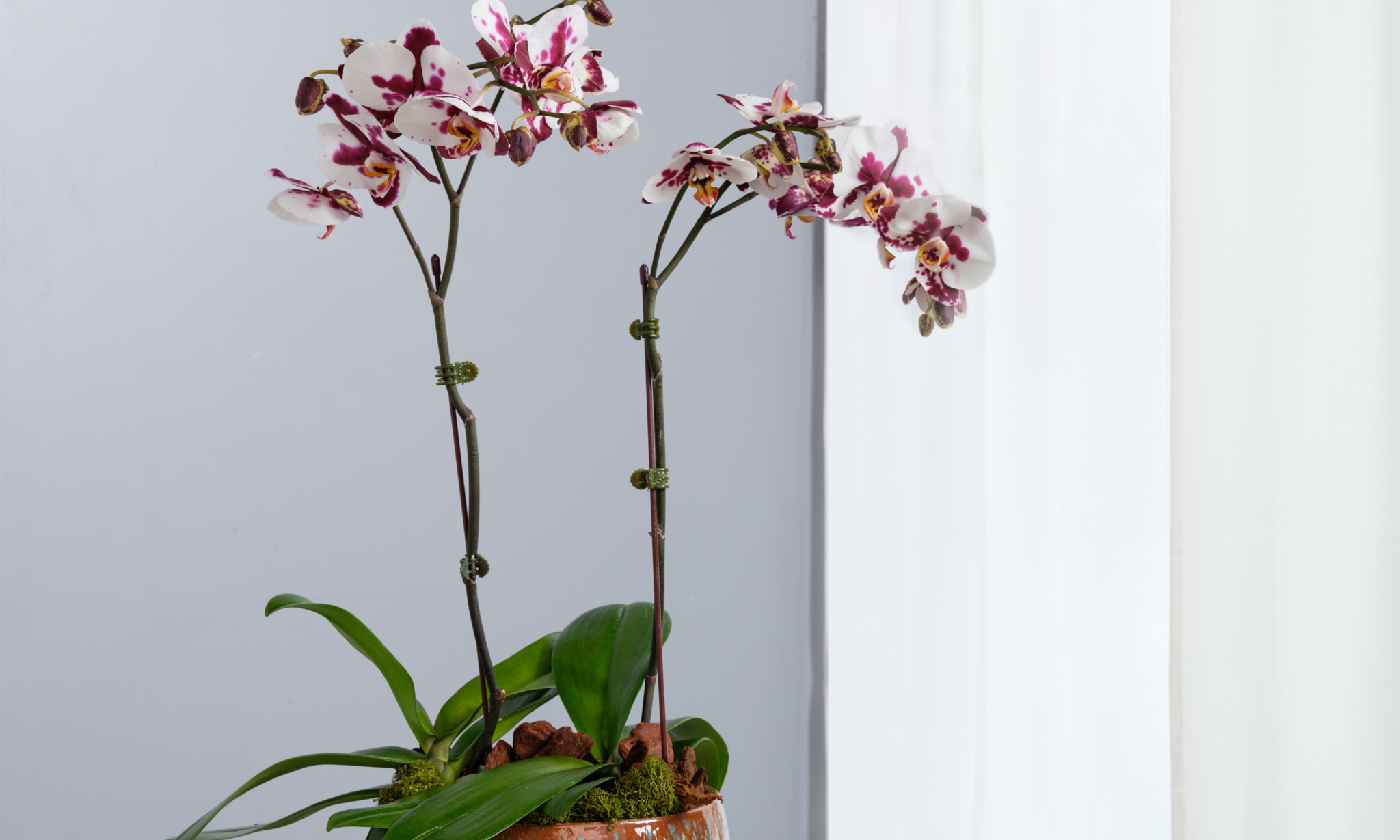
Orchid care for beginners may seem daunting at first, but with the right knowledge and attention to detail, anyone can successfully care for these beautiful plants. By understanding their specific needs regarding watering, light, temperature, and humidity, you can create an environment where your orchids will flourish. Remember to avoid common mistakes and provide consistent care and attention. With patience and practice, you’ll be rewarded with stunning blooms and the satisfaction of nurturing these remarkable plants.
Discover the captivating beauty of orchids at Darcey Flowers. With our carefully curated selection, you can choose from a variety of stunning orchids, including vibrant vanda orchids and delicate phalaenopsis orchids, available in a mesmerizing array of colors. Explore our collection today and embrace the enchantment of nature’s finest creations: the orchid!